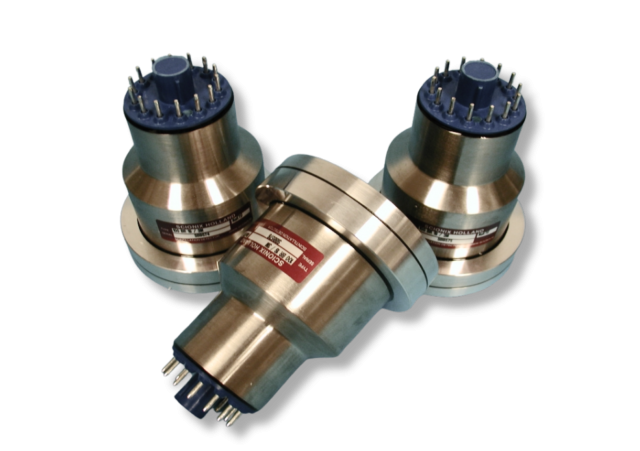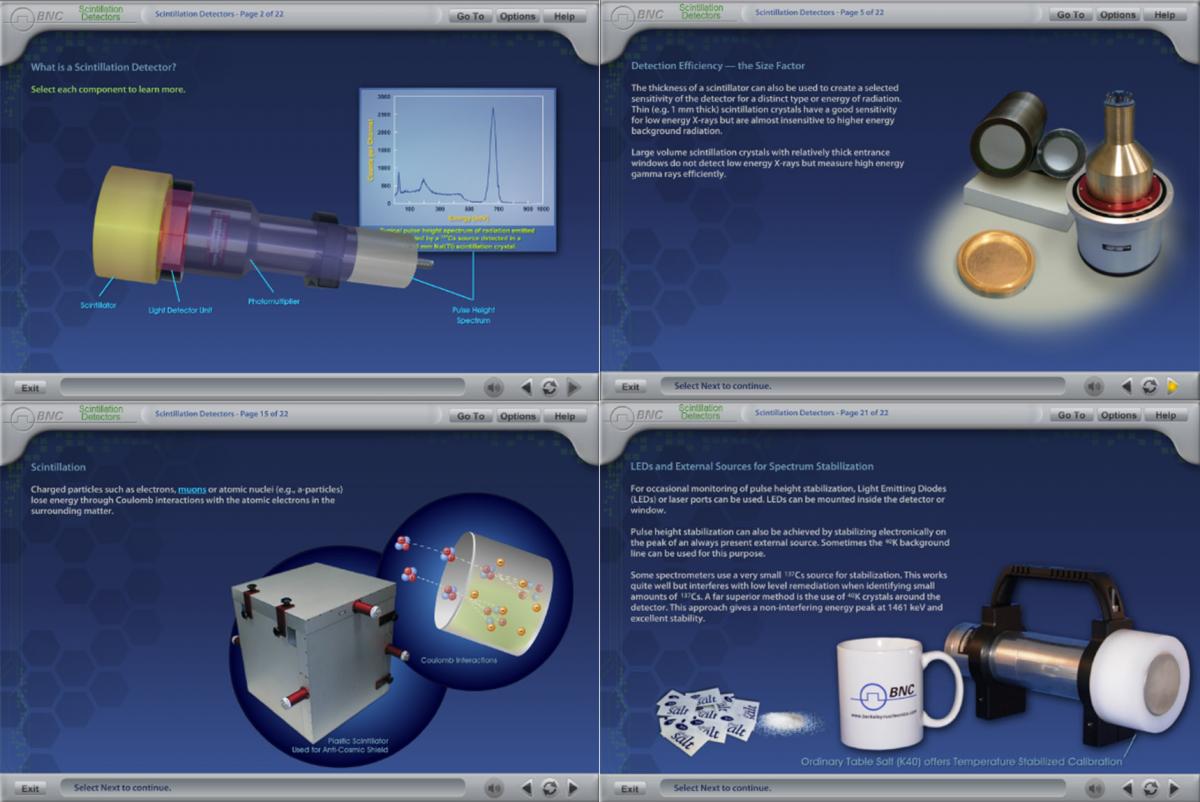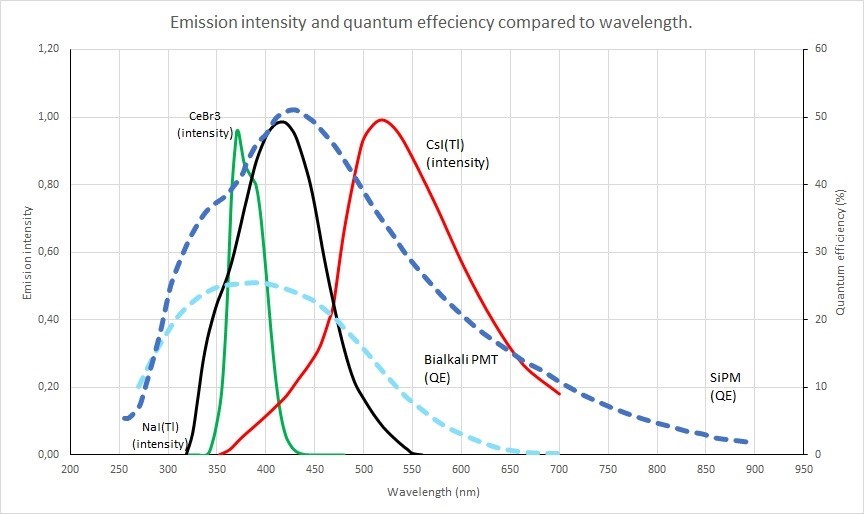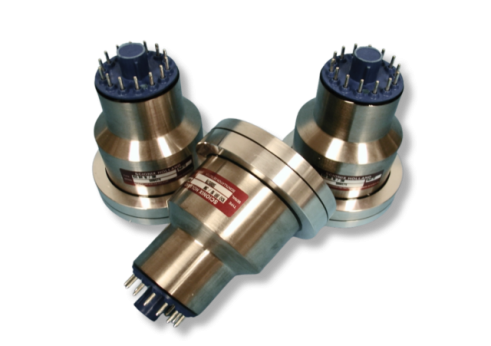
Berkeley Nucleonics offers a full range of standard, specialized, and custom built scintillation detectors designed to meet the needs of the most demanding radiation counting applications. All known scintillation materials are employed ranging from plastics to liquid scintillators to inorganic crystals such as NaI(Tl), CsI(Tl) / (Na), high-density BGO, high-resolution LaBr3, CeBr3, GAGG(Ce) plus many more. We've received many inquiries about repairing and calibrating St. Gobain detectors and crystals. Please contact us directly, as we assess requests case by case.
The catalog of available designs is comprehensive and includes encapsulated scintillators with entrance windows, scintillators optically coupled to a light read-out device such as a PMT or SiPM, and complete detector assemblies with integrated, plug-on, or stand-alone electronics. Specialized designs such as Compton suppression shields, pixelated arrays, well type assemblies, ruggedized or miniaturized assemblies, plus a range of others are available as well. In addition, digital signal analysis is available from BNC via compact plug-on or stand alone Multi Channel Analyzers (MCAs).
Scintillation detectors serve a wide range of applications across various industries:
• Medical Applications: These include SPECT and planar imaging, PET scanners (Positron Emission Tomography), CT scanners (Computed Tomography), surgical probes, BMD (Bone Mass Densitometry), RIA (Radioimmunoassay), and whole-body counting.
• Geophysical Applications: Detectors are essential for wireline logging, MWD (Measurement While Drilling), multiphase flow analysis, and aerial (large area) surveys.
• Security Applications: Scintillation detectors provide critical support in nuclide identification, cargo scanning, luggage scanning, and portal monitoring.
• Industrial Applications: They are utilized for contamination monitoring, non-destructive evaluation, nuclear gauging, and thermal neutron activation analysis.
• Physics Research Applications: These include spectroscopy, calorimetry (HEP), and astrophysics.
Contact BNC for more information or to discuss your application. You can also tell us about your requirements by completing our brief detector Survey.
Overview
|
CeBr3 Detectors: Cerium Bromide scintillation crystals are characterized by their high resolution fast decay time, and low intrinsic background properties. With a background count as low as <0.001 c/cc/s in the Ac-227 complex, CeBr3 presents a distinct advantage over other high-resolution scintillators which suffer from this intrinsic activity. Typical energy resolution for 662 keV is ~4% FWHM. Srl2(Eu) Detectors: Europium doped Strontium Iodide scintillators feature very high light yields and excellent performance over a broad range of energies. Srl2(Eu) crystals are inherently free of intrinsic radioactivity resulting in a reduction of background activity and fewer false peaks. Typical energy resolution for 662 keV is < 4% FWHM. BaF2 Detectors: Barium Fluoride scintillators feature ultra-fast sub ns UV emissions. BaF2 is used in physics fast timing research such as positron life studies. LBC Detectors: Lanthanum BromoChloride scintillators are bright and feature an excellent energy resolution of 3% FWHM for 662 keV. This new material is comparable to LaBr3 and is ideal for high resolution gamma spectroscopy applications. Sodium Iodide Detectors: NaI(Tl) scintillation crystals are widely used in most standard gamma spectroscopy applications due to their unmatched high light output and excellent match of their emission spectrum to the sensitivity of photomultiplier tubes. Cesium Iodide Detectors (Tl) (Na) (undoped): CsI(Tl) scintillators are rugged, non-hygroscopic, and do not cleave. These detectors are frequently used as an alternative to NaI(Tl) for a wide range of applications. CsI(Na) is a non-hygroscopic, high light output scintillator mainly used for applications where mechanical stability and good energy resolution are required. CsI(undoped) scintillators are fast, non-hygroscopic, and feature relatively low light output. A common use of undoped CsI is in physics calorimetry applications. Plastic Detectors: Organic scintillators offer a comparatively cost effective alternative to inorganic crystals and can therefore be used in larger volumes. A large number of different organic scintillators are available for particle detection, neutron detection, Gamma / Neutron discrimination, and security or health physics applications. GAGG(Ce) Detectors are scintillation crystals known for their exceptional properties in detecting gamma-ray radiation, offering high light yield and excellent energy resolution. Their advantages include superior stopping power for gamma rays, making them an ideal choice for applications in medical imaging, homeland security, and high-energy physics. |
CLYC:Ce Detectors: Cs2LiYCl6:Ce (CLYC) scintillators combine the characteristics of medium resolution gamma ray detectors and 3He neutron detectors in one scintillation material. CLYC scintillators can therefore be used for both gamma and neutron detection. YAP:Ce Detectors: YAP scintillators are fast, provide high light output, and low Z values. Applications include MHz rate X-ray spectroscopy and synchrotron physics. CLLBC Detectors: A new material, Cesium Lanthanum Lithium BromoChloride crystals can perform both high resolution gamma spectroscopy with 3% FWHM energy resolution for 662 keV and simultaneous Neutron detection. The dual mode material can be used for both gamma spectroscopy and neutron detection using PSD. CaF2(Eu) Detectors: Europium doped calcium fluoride is a low density scintillation crystal with a high light output. Thanks to its low Z value it is well suited for the detection of electrons (beta particles) with a high efficiency (low backscatter fraction). CaF2(Eu) is also used in phoswich scintillation detectors in combination with NaI(Tl). LaBr3 Lanthanum Bromide: is a highly efficient scintillator material known for its exceptional energy resolution and rapid response time, making it widely used in radiation detection and medical imaging applications. 6Lil(Eu) Detectors: Used for thermal Neutron detection and spectroscopy, 6Lil(Eu) scintillators feature high neutron cross section and high light output. CdWO4 Detectors: This material has a very high density, low afterglow, and is radiation hard. Common applications include low afterglow CT applications, DC measurements of X-rays (high intensity), photodiode readout, Computerized Tomography (CT). LYSO Scintillators: LYSO crystals are fast, have high density and high Z value. Applications include PET, high energy physics. PbWO4 Detectors: These fast, high density scintillators with low afterglow and slow decay times are primarily used in calorimetry physics research. BGO Detectors: BGO has a high density of 7.13 g /cm3 and has a high Z value which makes these crystals very suited for the detection of natural radioactivity (U, Th, K), for high energy physics applications (high photo fraction) or in compact Compton suppression spectrometers. Liquid Scintillators: Doped liquids such as EJ-301 and EJ-309 offer fast neutron / gamma discrimination properties allowing for their use in Pulse Shape Discrimination (PSD) applications. |
|
Material |
Density (g/cm3) |
Emission Maximum (nm) |
Decay Constant (*) |
Refractive Index (**) |
Conversion Efficiency (***) |
Hygroscopic |
|
CeBr3 |
5.23 |
370 |
18 ns |
1.9 |
130 |
Yes |
|
Srl2(Eu) |
4.6 |
400 - 480 |
1 - 5 us |
1.81 |
30-40 |
Yes |
|
CLYC |
3.31 |
370 |
1 ns, 50 ns, 1000 ns |
1.81 |
TBA |
Yes |
|
NaI(Tl) |
3.67 |
415 |
0.23 us |
1.85 |
100 |
Yes |
|
CsI(Tl) |
4.51 |
550 |
0.6 / 3.4 us |
1.79 |
45 |
Slightly |
|
CsI(Na) |
4.51 |
420 |
0.63 us |
1.84 |
85 |
Slightly |
|
CsI(Undoped) |
4.51 |
315 |
16 ns |
1.95 |
4 - 6 |
No |
|
BGO |
7.13 |
480 |
0.3 us |
2.15 |
15 - 20 |
No |
|
YAP(Ce) |
5.55 |
350 |
27 ns |
1.94 |
35 - 40 |
No |
|
CaF2(Eu) |
3.18 |
435 |
0.84 us |
1.47 |
50 |
No |
|
LaCI3:Ce |
3.79 |
350 |
70 ns |
1.90 |
95 - 100 |
Yes |
|
6Li-Glass |
2.6 |
390 / 430 |
60 ns |
1.56 |
4 – 6 |
No |
|
6Li-(Eu) |
4.08 |
470 |
1.4 us |
1.96 |
35 |
Yes |
|
BaF2 |
4.88 |
315 / 220 |
0.63 us / 0.8 ns |
1.50 / 1.54 |
16 / 5 |
No |
|
LYSO:Ce |
7.20 |
420 |
50 ns |
1.82 |
70 - 80 |
No |
|
CdWO4 |
7.90 |
470 / 540 |
20/5 us |
2.3 |
25 - 30 |
No |
|
PbWO4 |
8.28 |
420 |
7 ns |
2.16 |
0.20 |
No |
|
Plastics |
1.023 |
375 - 600 |
ns range |
1.58 |
25 - 30 |
No |
| LaBr2.85Cl0.15:Ce (LBC) | 4.90 |
380 |
35 ns | 1.90 | 140 | Yes |
|
LaBr3 |
5.08 | 380 | 21 ns | 1.89 | 140 | Yes |
|
Cs2LiLaBr4.8Cl1.2:Ce (CLLBC) |
4.08 | 420 | 120 ns, 500 ns | 1.90 | TBA | Yes |
|
GAGG(Ce) |
6.63 | 520 | 76 ns | 1.96 | TBA | No |
* Effective average decay time for Gamma-rays
**At the wavelength of the emission maximum.
***Relative scintillation signal at room temperature for Gamma-rays when coupled to a Bi-Alkali photocathode PMT.
Encapsulated scintillators with optical windows:
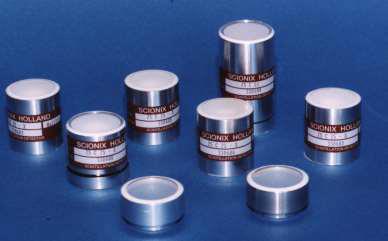
Standard detectors with integrated light readout device (PMT, SiPM, Photodiode, etc.):

Scintillation detectors with front-end or advanced hybrid electronics:
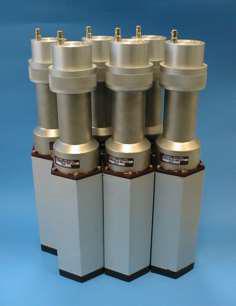
Compton Suppression Shields:
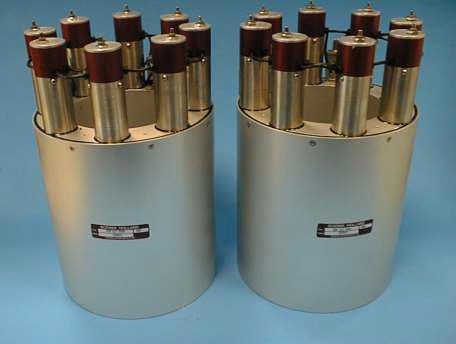
Fiddler Probes for X-ray detection

Pixelated arrays:
![]()
SiPM Detectors:
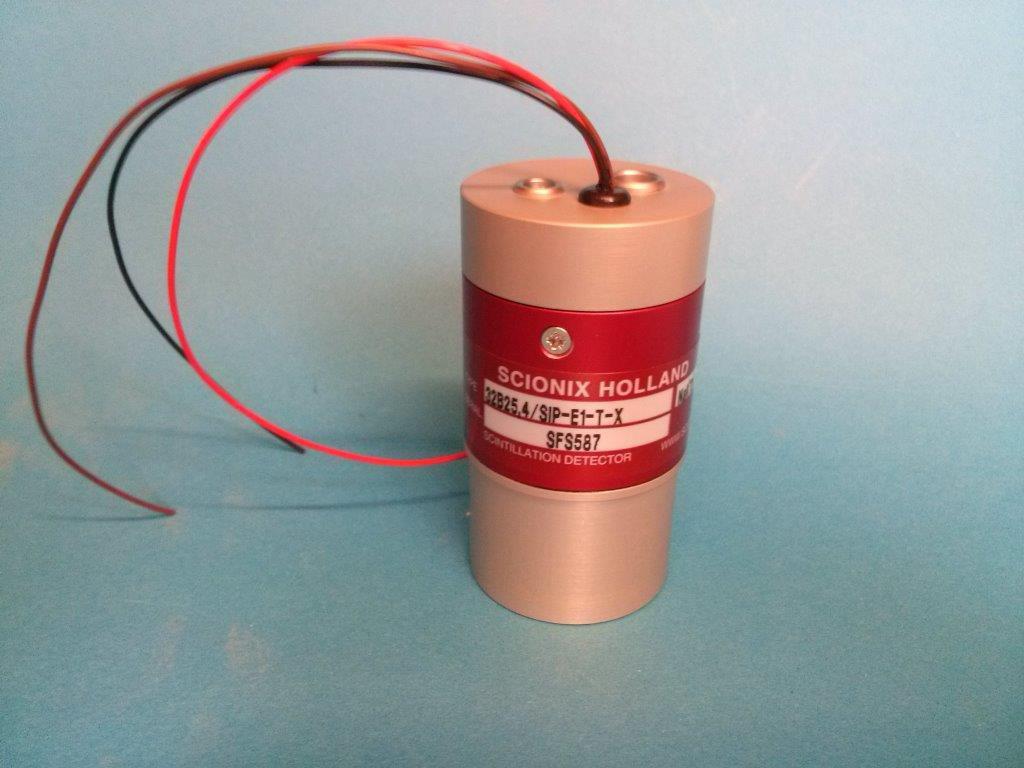
Square or Rectangular Cross Section Detectors:
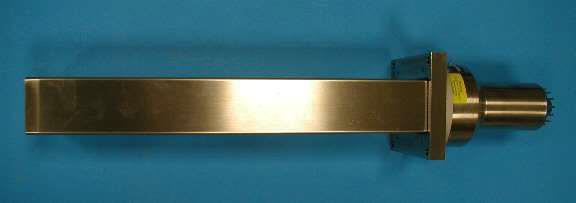
Well Detectors:
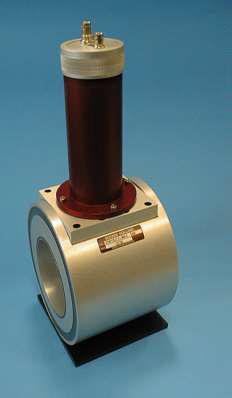
Specialized or Custom Designs:
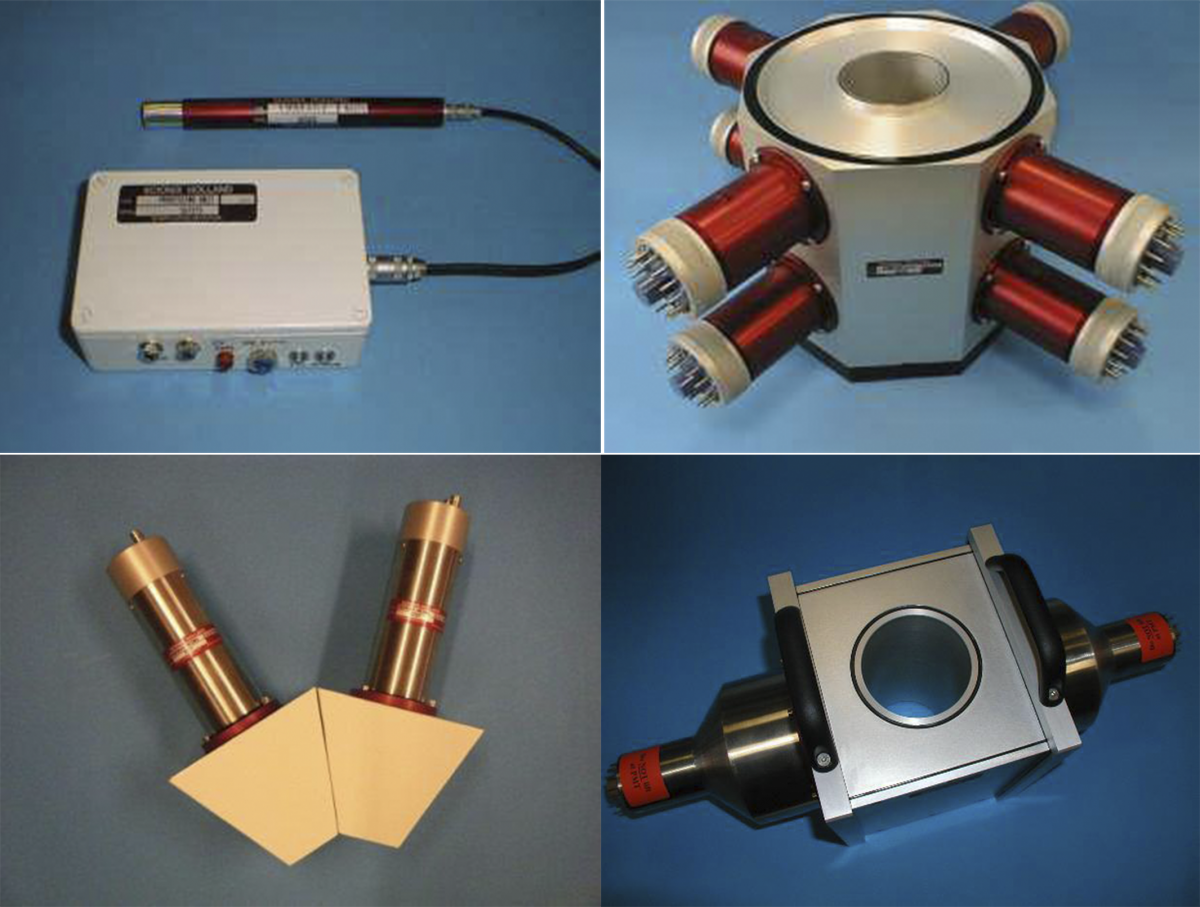
Free Online Training Module - An Introduction to Scintillation Crystals and Detectors
Visit our Training page to access the module or for more information
Downloadable resources such as datasheets, firmware, software, drivers and products manuals. Alternatively, you can browse resources directly by visiting our downloads page.
• Product Datasheets
• Product Firmware
• Product Software and Drivers
• Product Manuals


